Archduke Friedrich, Duke of Teschen
Archduke Friedrich, Duke of Teschen (Friedrich Maria Albrecht Wilhelm Karl; 4 June 1856 – 30 December 1936) was a member of the House of Habsburg and the Supreme Commander of the Austro-Hungarian Army during World War I.
| Archduke Friedrich | |
|---|---|
 | |
| Supreme Commander of the Imperial and Royal Armed Forces | |
| In office 1914 – 2 December 1916 | |
| Predecessor | Franz Joseph I |
| Successor | Charles I |
| Duke of Teschen | |
| Reign | 1895–1918 |
| Predecessor | Archduke Albrecht |
| Born | 4 June 1856 Gross-Seelowitz, Moravia |
| Died | 30 December 1936 (aged 80) Magyaróvár, Hungary |
| Burial | |
| Spouse | Princess Isabella of Croÿ (m. 1878–1931; her death) |
| Issue | Archduchess Maria Christina, Hereditary Princess of Salm-Salm Archduchess Maria Anna, Hereditary Duchess of Bourbon-Parma Archduchess Maria Henrietta Archduchess Natalie Maria Archduchess Stephanie Maria Isabelle Archduchess Gabriele Maria Theresia Archduchess Isabella Archduchess Maria Alice Archduke Albrecht Franz, Duke of Teschen |
| House | Habsburg |
| Father | Archduke Karl Ferdinand of Austria |
| Mother | Archduchess Elisabeth Franziska of Austria |
| Religion | Roman Catholicism |
Early life
Friedrich was born at the castle Gross-Seelowitz (now Židlochovice, near Brno in Moravia) the son of Karl Ferdinand, Archduke of Austria and his wife Archduchess Elisabeth Franziska of Austria.
His siblings included Queen Maria Cristina of Spain, Archduke Charles Stephen of Austria, a candidate for the Kingdom of Poland, and Archduke Eugen of Austria, an Austrian officer.
When Friedrich's uncle Archduke Albert, Duke of Teschen died in 1895, he and his brothers each inherited large estates. Friedrich owned properties at Ungarisch-Altenburg (now Mosonmagyaróvár in Hungary), Belleje, Saybusch (now Żywiec in Poland), Seelowitz (now Židlochovice) and Frýdek in the Czech Republic, and Pressburg (now Bratislava in Slovakia). His Vienna residence, the Palais-Albrecht, housed the Albertina art collection which he owned.
Marriage
On 8 October 1878 Friedrich married at Château L'Hermitage in Belgium, Princess Isabella of Croÿ (1856–1931), daughter of Rudolf, Duke of Croÿ, and his wife Princess Natalie of Ligne. They had nine children together.
- Maria Christina, Archduchess of Austria-Teschen (1879–1962), married Prince Manuel of Salm-Salm
- Maria Anna, Archduchess of Austria-Teschen (1882–1940), married Elias, Duke of Parma
- Maria Henrietta, Archduchess of Austria-Teschen (1883–1956), married Prince Gottfried of Hohenlohe-Waldenburg-Schillingfurst
- Natalie, Archduchess of Austria-Teschen (1884–1898)
- Stephanie, Archduchess of Austria-Teschen (1886–1890)
- Gabriele, Archduchess of Austria-Teschen (1887–1954)
- Isabella, Archduchess of Austria-Teschen (1888–1973), married Prince Georg of Bavaria
- Maria Alice, Archduchess of Austria-Teschen (1893–1962), married Baron Friedrich Waldbott von Bassenheim (their daughter Countess Maria Immaculata of Bassenheim was the second wife of Count Hans Heribert of Toerring-Jettenbach, son of Duchess Sophie Adelheid in Bavaria)
- Albrecht Franz, Archduke of Austria, Duke of Teschen (1897–1955)
Military career

Like most of the princes of the ruling house, Friedrich adopted a military career, and served creditably for many years as commandant of the V. (Pressburg) Corps. Subsequently, commander-in-chief of the Austrian Landwehr (militia) and army inspector, he became, after the murder of the heir to the throne, Archduke Franz Ferdinand, inspector-general of the Austro-Hungarian Army.[1]
In World War I, he was —from the dynastic point of view —as grandson of the victor of Aspern, Archduke Charles, and as nephew of the victor of Custoza, Archduke Albert, the predestined head of the armed forces of Austria-Hungary; and on 11 July 1914 Friedrich was appointed supreme commander of the Austro-Hungarian Army by Emperor Franz Joseph I. He thought it his duty to accept this heavy responsibility, but, modestly underestimating his own powers, left the actual exercise of the command to his chief-of-staff, Franz Graf Conrad von Hötzendorf. In the performance of ceremonial duties, and as mediator for the settlement of the conflicting demands of the military, civil and allied elements, his services were undeniable.[1] He was promoted to the rank of Generalfeldmarschall on 8 December 1914. In February 1917 Emperor Charles himself took over the supreme command; the Archduke, although the Emperor's representative, no longer appeared in the foreground.
Retirement and death
After World War I the governments of Austria and Czechoslovakia confiscated all of Friedrich's properties within their borders. These included his palace in Vienna and his art collection. He retained his properties in Hungary however. In 1929 he won a court case requiring compensation from the Czechoslovak government.[2]
Friedrich died at Ungarisch-Altenburg (Magyaróvár, now Mosonmagyaróvár) in 1936. His death was the biggest royal event for Hungary since the coronation of King Karl in 1916. The funeral and burial in the Pfarrkirche in Mosonmagyaróvár was attended by his nephew, the exiled King of Spain; by numerous archdukes; by all the surviving Austro-Hungarian field marshals; by personal representatives of Hitler; by members of the House of Savoy; by the diplomatic corps; by a son of exiled German Kaiser Wilhelm; by representatives of the governments of Germany, Italy and Austria, and by Hungary's Regent, Miklós Horthy and his wife. There were members of the Hungarian government and delegates of the German and Austrian in attendance as well. Entire battalions of the Royal Hungarian Army were present to pay their last respects to their former Supreme Commander.
Decorations and awards
Friedrich received the following decorations and awards:[3][4]
- National orders and decorations
- Knight of the Golden Fleece, 17 April 1873
- Military Merit Cross, 30 November 1892; in Diamonds, 30 November 1898; 1st Class with War Decoration, 9 May 1915
- Grand Cross of St. Stephen, 9 November 1893
- Bronze Military Merit Medal ("Signum Laudis"), September 1899; Gold Medal ("Großes Signum Laudis") on the ribbon of the Military Merit Cross, 17 October 1916
- Red Cross Merit Star, 21 August 1914; with War Decoration, 15 February 1915
- Grand Cross of the Military Order of Maria Theresa, 25 November 1916
- Long Service Cross for Officers, 2nd Class
- Bronze Jubilee Medal for the Armed Forces
- Military Jubilee Medal
- Foreign orders and decorations

- Grand Cross of the Württemberg Crown, 21 July 1873
- Grand Cross of the Military Merit Order, 30 May 1915
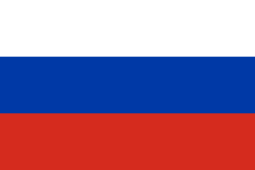
- Knight of St. Andrew, 4 January 1877
- Knight of St. Alexander Nevsky, 30 December 1878
- Knight of the White Eagle, 30 December 1878
- Knight of St. Anna, 1st Class, 30 December 1878
.svg.png)
.svg.png)
.svg.png)
.svg.png)
.svg.png)
.svg.png)
- Knight of St. Hubert, 24 May 1889
- Grand Cross of the Military Order of Max Joseph, 1 May 1915
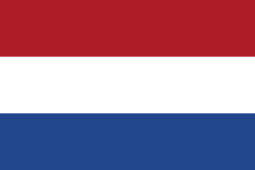
.svg.png)
.svg.png)
- Knight of the Rue Crown, 26 February 1891
- Commander of the Military Order of St. Henry, 1st Class, 22 May 1915
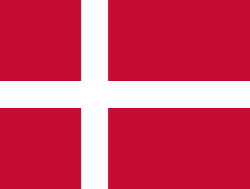
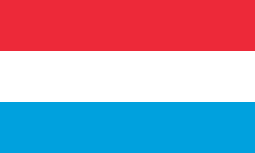
.svg.png)
- Knight of the Black Eagle, 22 October 1892; with Golden Collar, 3 October 1903
- Knight of the Red Eagle, 1st Class, ca. 1895
- Iron Cross, 1st and 2nd Classes, 31 August 1914
- Pour le Mérite, 14 May 1915; with Oak Leaves, 5 January 1917
.svg.png)
- Grand Cross of the Order of Charles III, with Collar, 17 March 1896[6]
- Grand Cross of Military Merit, 5 November 1905

.svg.png)

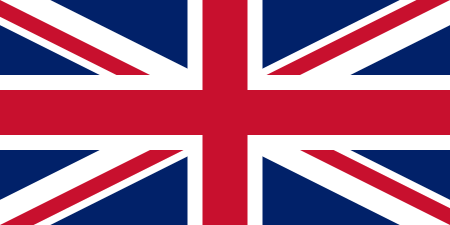
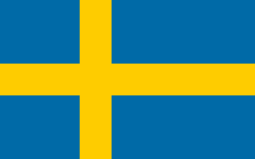
.svg.png)
- Knight of the House Order of Fidelity, 10 May 1908
- Grand Cross of the Order of Berthold the First, 10 May 1908
.svg.png)
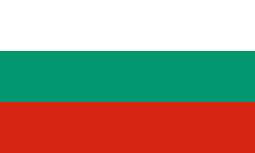
- Knight of Saints Cyril and Methodius, 12 June 1912
- Order of Bravery, 1st Class, 19 February 1916
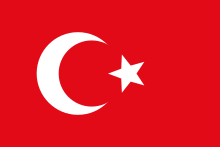

- Grand Cross of the Wendish Crown, with Crown in Ore, 10 November 1911
- Military Merit Cross, 1st and 2nd Classes, 14 March 1915




Ancestry
| Ancestors of Archduke Friedrich, Duke of Teschen |
|---|
Notes
-

- "Papa Friedrich Preferred", Time Magazine (18 February 1929)
- "Archduke Friedrich". www.austro-hungarian-army.co.uk/. Retrieved 21 June 2020.
- Hof- und Staatshandbuch der Österreichisch-Ungarischen Monarchie (1918), Genealogy p. 11
- Jørgen Pedersen (2009). Riddere af Elefantordenen, 1559–2009 (in Danish). Syddansk Universitetsforlag. p. 472. ISBN 978-87-7674-434-2.
- "Real y distinguida orden de Carlos III". Guía Oficial de España (in Spanish). 1918. p. 210. Retrieved 21 June 2020.
- Shaw, Wm. A. (1906) The Knights of England, I, London, p. 204
- Svensk rikskalender (in Swedish), 1909, p. 613, retrieved 6 January 2018 – via runeberg.org
References
- Heiszler, Vilmos. Photo Habsburg: Frederick Habsburg and his Family. Budapest: Corvina, 1989.
- Jewison, Glenn, and Jörg C. Steiner. "Erzherzog Friedrich" (Austro-Hungarian Land Forces 1848–1918).
- Palmer, Alan. Twilight of the Habsburgs: The Life and Times of Emperor Francis Joseph. Atlantic Monthly Press; 1st Pbk. Ed edition.
- Stefanovics, Glenn W. "Friedrich Maria Albrecht Wilhelm Karl von Österreich-Toskana, Herzog von Teschen"
External links
![]()
- Newspaper clippings about Archduke Friedrich, Duke of Teschen in the 20th Century Press Archives of the ZBW
Archduke Friedrich, Duke of Teschen Born: 4 June 1856 Died: 30 December 1936 | ||
| Titles of nobility | ||
|---|---|---|
| Preceded by Archduke Albert |
Duke of Teschen 1895–1936 |
Succeeded by Archduke Albrecht Franz |